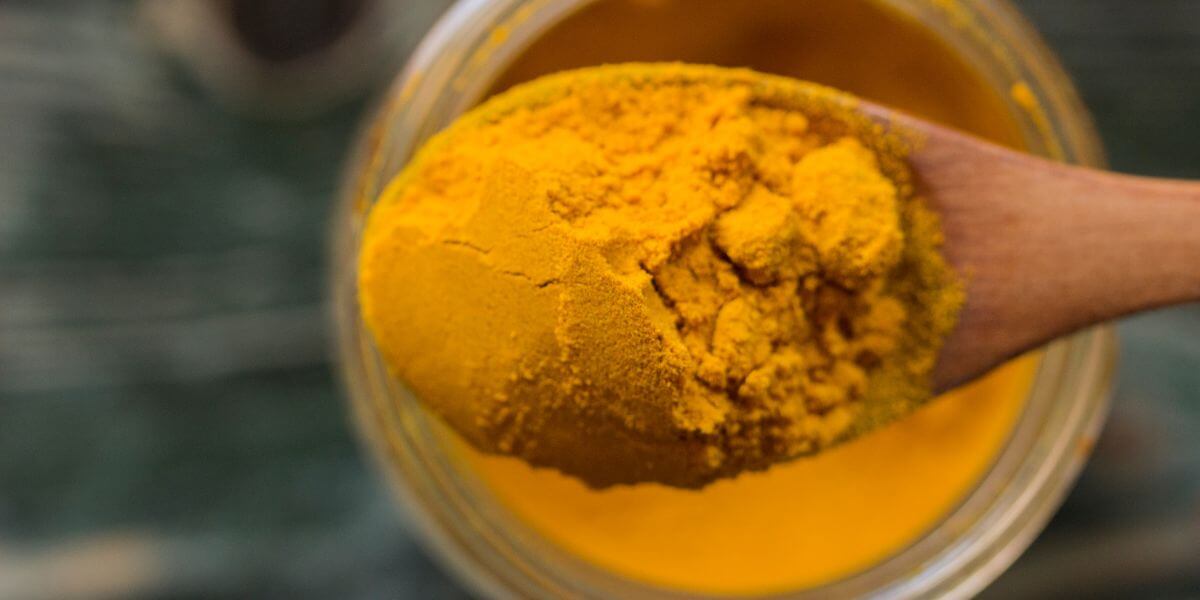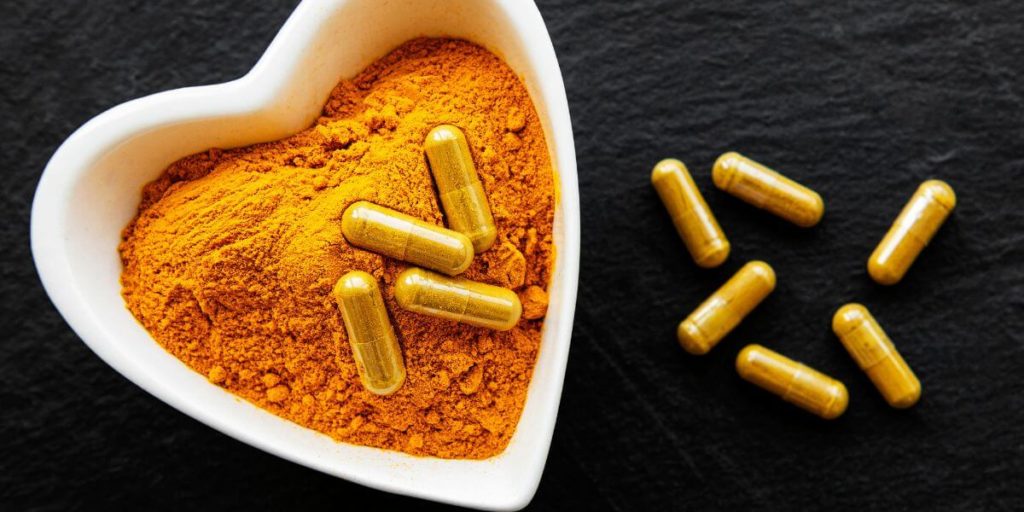Turmeric – in both fresh and powdered form – warms the bellies of millions of people every day and treats various ailments, too. While we’re fans of fresh turmeric, we’ll talk about its powdered form here. Let’s find out if there is such a thing as “the best turmeric powder” or if it’s all just marketing speak. Let’s dive in!
Table of Contents
What are some common uses of turmeric powder?
Turmeric is known as a functional food, that is, it offers health benefits beyond its nutritional value. Its health benefits are attributed to its active compound Curcumin. This is a very potent antioxidant that is present in both fresh and powdered turmeric.
That said, using turmeric powder (over fresh ones) is preferable in many cases. There’s less preparation time and no moisture, so it’s great for use in various dishes and beverages. Plus, it not only adds flavor and fragrance but also lends a warm, golden color to whatever it’s added to. Turmeric’s fame is so ubiquitous in India that their dietary intake averages at around 200-1000mg per day (1).
Nowadays, turmeric’s popularity is global. Its use is also no longer limited to food products. You’ll find it in various cosmetic products, such as turmeric serums, creams, scrubs, masks, facial washes, moisturizers, etc.
What are the components of turmeric powder?
Curcumin may be the most well-known component of turmeric. But it’s actually only a tiny percentage of what makes up turmeric, as you can see below (2):
- Carbohydrates – 60-70%
- Water – 6-13%
- Protein – 6-8%
- Fat – 5-10%
- Dietary minerals – 3-7%
- Essential oils – 3-7%
- Dietary fiber – 2-7%
- Curcuminoids – 1-6%
So, where does curcumin fit in? Is the last bullet point above (curcuminoids) a typo?!
Well, no, it isn’t. Curcumin is a curcuminoid.
Curcuminoids are active compounds composed of 3 types (3):
- Curcumin – about 77% of curcuminoid content
- Demethoxycurcumin – 17% of curcuminoid content
- Bisdemethoxycurcumin – 3% of curcuminoid content
Curcuminoid content isn’t measured on ordinary turmeric powder, but it is measured AND standardized on curcumin supplements.
Are there any problems with ordinary turmeric powder?
There are many different brands of turmeric powder, which you’ll find in grocery stores, health shops, and various online shops. The powder looks something like this:

To answer the question presented in this section, we need to look at the characteristics of ordinary turmeric powder.
A typical serving of ordinary turmeric powder is about ½ teaspoon or 2g. You can take more or less than this serving size. But the problem remains – turmeric contains only a tiny amount of its bioactive component, curcumin.
Another problem is that the curcumin content in ordinary turmeric powder is not standardized to any amount, making it highly variable and unpredictable.
If there’s only a tiny amount of curcumin per serving, then you may not be able to experience any of its benefits, such as the 10 benefits of curcumin phytosome we’ve discussed here.
And the biggest problem of all?
Curcumin (from ordinary or unenhanced turmeric powder) is absorbed very poorly by the body (4).
In one study, researchers found no trace of curcumin in the serum of volunteers who took up to 8g of unenhanced curcumin. When they increased the dose to 10g-12g, only then did low levels of curcumin appear in the blood tests (5).
For these reasons, ordinary turmeric powder cannot be the best.
To qualify as “the best turmeric powder,” there should be a standardized amount of curcumin in the powder and absorption rates need to be improved as well.
Are there any products that standardize the curcumin content?
Yes, fortunately, many turmeric/curcumin supplements standardize their curcumin content.
Check the product label and look at the supplement facts section. Here’s what it looks like on our Intelligent Labs Meriva Curcumin Phytosome 500 label (note: this is the USA version):

We wanted to make a quick comparison. So we looked at a few curcumin supplements that printed their curcuminoid content on the label:
| 1st Brand | 2nd Brand | 3rd Brand | Intelligent Labs Curcumin 500 | |
| Serving size | 3 capsules | 1 soft gel | 1 tablet | 2 capsules |
| Turmeric per serving | 1350mg | 800mg | 632mg | 1000mg |
| Amount of curcuminoids per serving (from the label) | 150mg | 48mg | 600mg | 180mg-220mg |
| Estimated curcumin content (77% of curcuminoids) | 115.5mg | 36.96mg | 462mg | 138.6mg – 169.4mg |
Looking at the table above, what do you think is the best curcumin supplement?
You’re probably thinking Brand #3 because it has 600mg of curcuminoid content and approximately 462mg of curcumin content.
You’d be right if – and only if – all of the 462mg of curcumin makes it to your bloodstream… but unfortunately, it doesn’t.
Brands 1, 2, and 3 use unenhanced turmeric powder in their supplements, meaning bioavailability remains low.
On the other hand, our Intelligent Labs Meriva Curcumin Phytosome 500 uses a patented phytosome delivery system that helps increase absorption by up to 2900% (6)! You can see this info on the product label above.
Yes, the standardized curcuminoid content may seem low at only 18-22% (180mg-200mg). But with superior bioavailability, your body will be able to absorb more of it and therefore benefit from curcumin’s healing powers!
This is the biggest benefit of taking our curcumin supplement. By putting the curcumin in a non-allergenic, soy-free phytosome known as Phosphatidylcholine, absorption is significantly increased.
What are the benefits of taking the best turmeric powder?
We’ve covered the benefits of taking our Intelligent Labs Meriva Curcumin Phytosome in a separate blog post. But just in case you don’t want to read the entire post, here’s a summary of the science-backed curcumin benefits detailed in that post:
- It fights chronic inflammatory diseases
- Acts as an analgesic and helps with pain relief
- It’s a potent antioxidant that can fight off free radicals
- It helps improve mood and brain function
- Helps with obesity, diabetes, and heart disease
- May even help prevent and treat various forms of cancer
Because of these powerful health benefits, it is very important to make sure you use the best turmeric powder – and that’s the one that’s well-absorbed by the body!
How is turmeric powder made anyway?
Commercial turmeric powder comes from the dried rhizome (these are the horizontal stems that grow below the ground). Turning fresh turmeric into powder involves a lot of steps, such as (7):
- Boiling the fresh rhizomes to get rid of the raw odor and yield a uniformly colored product. The boiling technique has to be precise. Otherwise, quality will be affected.
- Drying the rhizomes using conventional (sun-dried) and advanced methods (vacuum, microwave, solar, and freeze-drying).
- Polishing the outer surface of the rhizome and then coloring for better appearance (important for international exports).
- Grading the turmeric into different categories – fingers, bulbs, and splits – according to their quality, with turmeric fingers being the highest quality.
- Grinding the graded turmeric into powder by cutting the rhizomes into small particles. Then sifting it through different-size mesh screens to finally arrive at the powdered form.
Final thoughts on the best turmeric powder
As we’ve learned in this blog post, the best turmeric powder does exist, but not in the typical loose powder format you’d usually find in grocery stores, ready for cooking or drinking. The best turmeric powder is standardized to contain a certain amount of curcuminoids (and therefore curcumin) and uses a delivery system that vastly improves absorption rates.
Before we wrap up this post, here are the product links to our Meriva Curcumin supplements:
Meriva Curcumin Phytosome 500mg
Meriva Curcumin Phytosome 250mg
If you think you can benefit from Curcumin as much as we do, stop by our shop and order yours, or bookmark the pages and buy at a later time!
References
(1) Thimmayamma B. V. S, Rau P, Radhaiah G. Use of spices and condiments in the dietaries of urban and rural families. J Indian Nutr Diet. 1983;20:153–62.
(2) Nelson, Kathryn M et al. “The Essential Medicinal Chemistry of Curcumin.” Journal of medicinal chemistry vol. 60,5 (2017): 1620-1637. doi:10.1021/acs.jmedchem.6b00975
(3) Lee W-H, Loo C-Y, Bebawy M, et al. Curcumin and its derivatives: their application in neuropharmacology and neuroscience in the 21st century. Current neuropharmacology. 2013;11(4):338-78.)
(4) Anand, Preetha et al. “Bioavailability of curcumin: problems and promises.” Molecular pharmaceutics vol. 4,6 (2007): 807-18. doi:10.1021/mp700113r
(5) Lao, Christopher D et al. “Dose escalation of a curcuminoid formulation.” BMC complementary and alternative medicine vol. 6 10. 17 Mar. 2006, doi:10.1186/1472-6882-6-10
(6) Cuomo, John et al. “Comparative absorption of a standardized curcuminoid mixture and its lecithin formulation.” Journal of natural products vol. 74,4 (2011): 664-9. doi:10.1021/np1007262
(7) Srinivas.P, & Guddanti, Nirmala & bhavani, s. (2019). Processing of turmeric. https://www.researchgate.net/publication/338118160_Processing_of_turmeric

